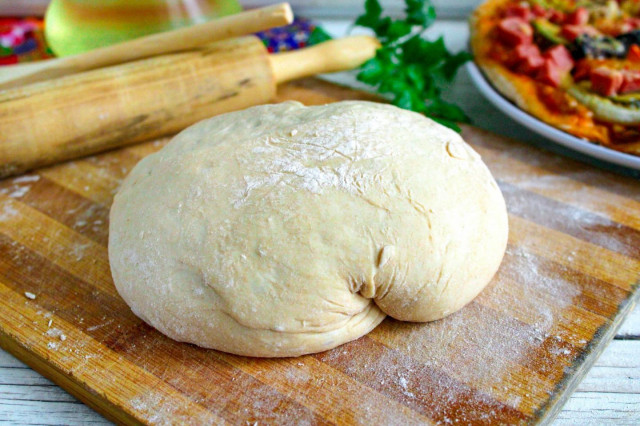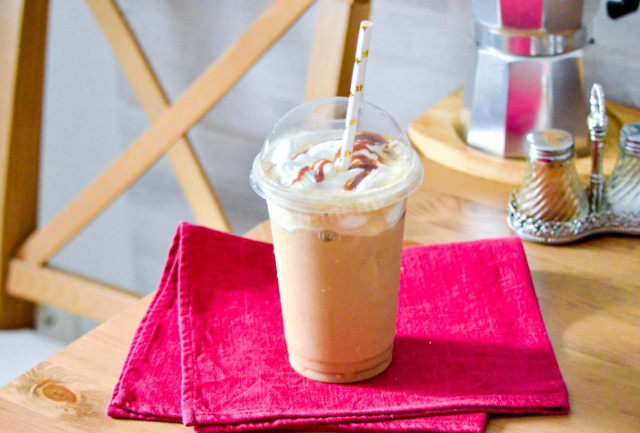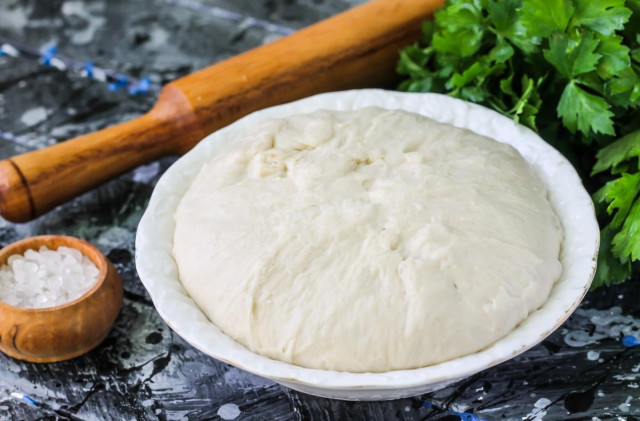Composition / ingredients
Step-by-step cooking
Step 1:
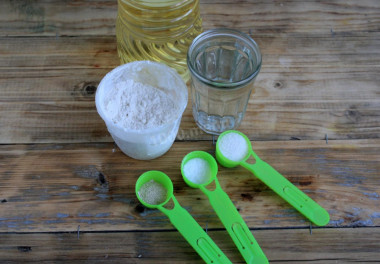
How to make pizza dough without eggs? Prepare the ingredients. It is not necessary to use dry fast-acting yeast, who is used to working with raw yeast, you can safely use them. Instead of 11 grams of dry yeast, take ~ 35 grams of fresh. The dough will turn out no worse. The approximate amount of flour is given, it can go either more or less from what is stated in the recipe. You will look at the status of the test. Read about the properties of flour at the end of the recipe.
Step 2:
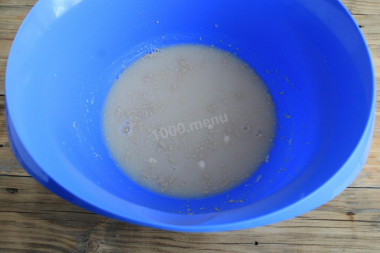
How to make sourdough? Pour warm water into a deep bowl (preheat it to 38 degrees in the microwave or on the stove, you can check the temperature with a clean finger, it should be comfortable). Add a couple of tablespoons of wheat flour, sugar and yeast. Mix the ingredients so that the sugar dissolves and the flour and yeast disperse. Put the bowl of sourdough in a warm place for 15 minutes.
Step 3:
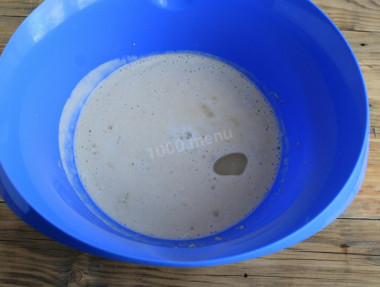
Meanwhile, sift the wheat flour. It is necessary to do this in order to completely remove foreign objects and impurities, and saturate the flour with oxygen. This will make the dough and its products softer and more airy. After the specified time, the yeast in the sponge should be activated — a "cap" in the form of foam will appear on the surface. Add salt to the dough, pour in vegetable oil. Mix it up.
Step 4:
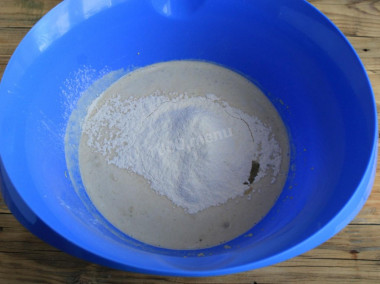
Start pouring the sifted wheat flour into the bowl with the liquid. Add flour in small portions, stirring the dough each time. When the dough becomes difficult to stir with a spoon, put it on a surface sprinkled with flour and continue kneading with your hands, adding flour if necessary. It is also not worth adding a lot of flour, so as not to score the dough.
Step 5:
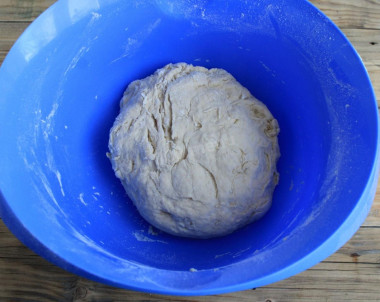
The dough should turn out smooth, elastic, not sticking to the hands. Put the dough back in the bowl, cover with a cotton towel and put in a warm place for an hour. In winter, this may be a place near the radiator, but in no case should you put a bowl of dough directly on the battery. The dough on it may dry out, the yeast will overheat and lose its properties.
Step 6:

In summer, if it's cold in the apartment, you can put the dough to rise in the oven turned off. There are no drafts and it is warm enough. In an hour it will double in volume. The dough is ready. Wrap it with your hands and start cooking pizza. Enjoy your meal!
Be prepared for the fact that you may need more or less flour than indicated in the recipe. Focus not on the amount of flour, but on the desired consistency of the dough. To avoid mistakes, read about flour and its properties!
The liquid in which yeast is bred should be pleasant to the touch, no higher than 40 degrees. Why is this important? In a warm environment, yeast is well activated, in a hot one it will die, and in a cold one it simply will not work. To avoid unpleasant surprises, check the yeast before mixing with the rest of the ingredients. Pour a little warm milk into a bowl, stir in the yeast. Cover the bowl with a kitchen towel and put it in a warm place without drafts for 10-15 minutes. During this time, a foam yeast cap should appear on the surface of the sponge. If this did not happen, then the fermentation process has not started (the yeast is overdue or spoiled). In this case, it is worth taking other yeast, otherwise baking will not work.
For cooking, it is better to use filtered or bottled water that is neutral to taste. If you use tap water, keep in mind that it can give the dish an unpleasant characteristic taste.
Calorie content of the products possible in the composition of the dish
- Granulated sugar - 398 kcal/100g
- Sugar - 398 kcal/100g
- Vegetable oil - 873 kcal/100g
- Salt - 0 kcal/100g
- Water - 0 kcal/100g
- Wheat flour - 325 kcal/100g
- Dry yeast - 410 kcal/100g

